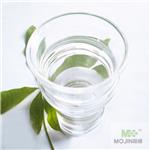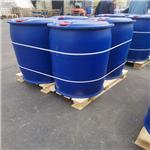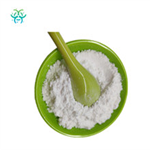Stannous Octoate: Versatile Catalyst for High-Performance Polymer Synthesis with Strict Safety Precautions
Feb 5,2024
General Description
Stannous octoate is a versatile catalyst used in the synthesis of polymeric materials, demonstrating its effectiveness in producing elastomeric copolymers and PLA-grafted M-alginate aerogels. The resulting copolymers, when combined with hydroxyapatite, create bone-filling composites with tailored mechanical properties and controlled degradation rates, holding promise for medical applications. However, safety precautions are crucial due to potential hazards associated with stannous octoate, requiring careful handling, emergency response protocols for spills, and proper protective measures. Overall, stannous octoate proves to be an essential component in the development of high-performance materials with diverse practical applications while demanding strict adherence to safety guidelines.

Figure 1. Stannous octoate
Applications in Synthesis of Polymers
Catalyst in the synthesis of polymeric materials
Stannous octoate is a commonly used catalyst in the synthesis of polymeric materials. In this study, stannous octoate was used as a catalyst in the ring-opening polymerization of D,L-lactide and epsilon-caprolactone dimers to synthesize elastomeric copolymers with two different molecular weights. The resulting copolymers were amorphous and had a final ratio of 60/40 of D,L-lactide to epsilon-caprolactone. The copolymers were then combined with varying amounts of hydroxyapatite powder, creating composites that could be easily shaped by hand. The mechanical properties of the composites were found to change with the amount of hydroxyapatite and the molecular weight of the copolymer. Specifically, the percent elongation decreased, while the Young's modulus and yield point (stress) increased with increasing HA content. Additionally, the copolymers were observed to degrade within Ringer solutions over a period of 6 weeks, with incorporation of HA reducing the degradation rate. Overall, stannous octoate proved to be an effective catalyst in producing copolymers that could be combined with hydroxyapatite to create bone-filling composites with tailored mechanical properties and controlled degradation rates. These findings have important implications for the development of new biomaterials for medical applications. 2
Synthesis of PLA-grafted M-alginate aerogels
Stannous octoate plays a crucial role in the synthesis of PLA-grafted M-alginate aerogels. In this process, DL-lactide (LA) is attached to the surface of preformed M-alginate beads and then polymerized, with stannous octoate serving as the catalyst. The -OH groups of the alginate backbone act as initiators/points of attachment for the polymerization. The resulting g-M-alginate aerogels exhibit excellent material properties, retaining the fibrous morphology of their parent M-alginate aerogels. They are lightweight, macroporous/mesoporous materials with high porosities, making them suitable for various applications. The bulk densities of these aerogels can reach up to 0.24 g cm-3, with BET surface areas ranging from 154-542 m2 g-1, depending on the metal, the nature of the alginate framework, and the PLA content. The use of stannous octoate as a catalyst enables the functionalization of alginate aerogels, paving the way for the synthesis of polylactide-crosslinked alginate aerogels using multifunctional monomers. This innovative methodology holds promise for the development of high-performance materials with diverse practical applications. 3
Safety Precautions for Handling
Stannous octoate presents potential hazards that require careful handling and safety precautions. In case of skin contact, contaminated clothing should be removed and the affected area thoroughly rinsed with copious amounts of running water. If eye contact occurs, the eyelids should be lifted and the eyes rinsed with flowing water or saline solution, followed by seeking medical attention. Inhalation of stannous octoate necessitates immediate relocation to fresh air, with provision for unobstructed breathing. Medical assistance should be sought if breathing difficulties arise, including the administration of oxygen or artificial respiration if necessary. In the event of ingestion, consuming ample warm water and inducing vomiting is recommended, followed by seeking medical attention. Emergency response protocols for spills involve isolating the contaminated area, limiting access, and extinguishing potential ignition sources. Proper protective measures for handling stannous octoate include engineering controls such as enclosed operations and local exhaust ventilation, as well as respiratory protection, eye and body protection, and the use of rubber gloves. Furthermore, strict adherence to operational procedures, specialized training for personnel, and appropriate storage conditions are essential to mitigate risks associated with stannous octoate. Adequate fire-fighting equipment, leak containment devices, and suitable storage areas are also critical components of safe handling and storage practices. Storing stannous octoate in a cool, ventilated area away from heat sources and sunlight, as well as separate from oxidizing agents, is imperative to ensure safety. 3
Reference
1. Ural E, Kesenci K, Fambri L, Migliaresi C, Piskin E. Poly(D,L-lactide/epsilon-caprolactone)/hydroxyapatite composites. Biomaterials. 2000;21(21):2147-2154.
2. Raptopoulos G, Choinopoulos I, Kontoes-Georgoudakis F, Paraskevopoulou P. Polylactide-Grafted Metal-Alginate Aerogels. Polymers (Basel). 2022;14(6):1254.
3. Stannous octoate. National Center for Biotechnology Information (2024). PubChem Compound Summary for CID 54605802.
- Related articles
- Related Qustion
- Stannous octoate: Application and Chemical synthesis Mar 6, 2023
Stannous octoate is a yellow to white viscous liquid. It is often used as an auxiliary agent for polyurethane industry, as well as an efficient catalyst and antioxidant.
Carrageenan, derived from seaweed, is used as an extrusion aid and stabilizer in drug delivery systems, enhancing pellet properties and emulsion stability.....
Feb 5,2024APIDimethyl dicarbonate is a widely used food additive that effectively inhibits microorganism growth and has antifungal properties, making it a promising agent for food preservation.....
Feb 5,2024APIStannous octoate
301-10-0You may like
Stannous octoate manufacturers
- Stannous octoate
-

- $0.00 / 25KG
- 2023-08-15
- CAS:301-10-0
- Min. Order: 1KG
- Purity: 99%
- Supply Ability: 50000KG/month
- Tin(II) 2-ethylhexanoate; Tin(II) octoate; Stannous Octoate
-

- $100.00 / 1kg
- 2022-09-24
- CAS:301-10-0
- Min. Order: 1kg
- Purity: 0.99
- Supply Ability: 100 tons
- Stannous octoate
-

- $10.00 / 1KG
- 2021-11-17
- CAS:301-10-0
- Min. Order: 1KG
- Purity: 99%
- Supply Ability: 10 mt




